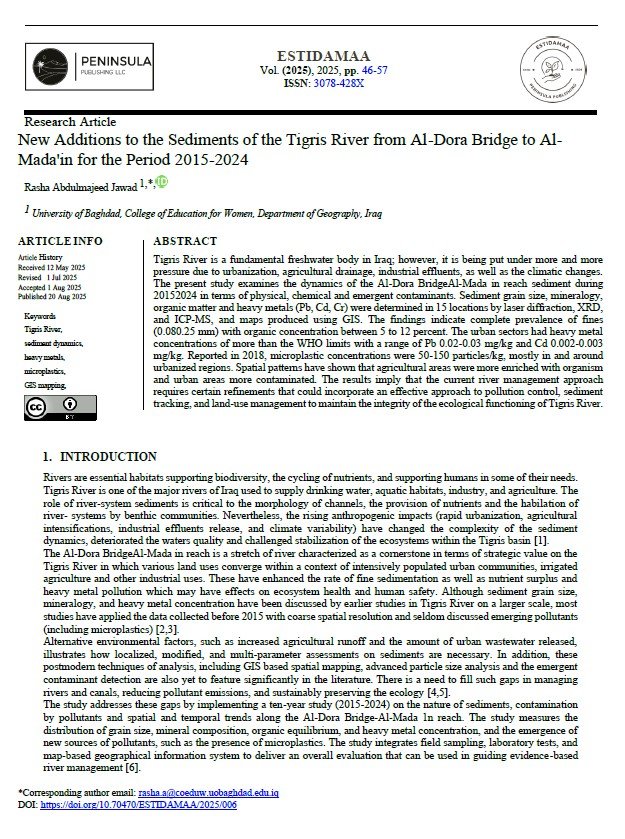New Additions to the Sediments of the Tigris River from Al-Dora Bridge to Al-Mada'in for the Period 2015-2024
Main Article Content
Abstract
Tigris River is a fundamental freshwater body in Iraq; however, it is being put under more and more pressure due to urbanization, agricultural drainage, industrial effluents, as well as the climatic changes. The present study examines the dynamics of the Al-Dora BridgeAl-Mada in reach sediment during 20152024 in terms of physical, chemical and emergent contaminants. Sediment grain size, mineralogy, organic matter and heavy metals (Pb, Cd, Cr) were determined in 15 locations by laser diffraction, XRD, and ICP-MS, and maps produced using GIS. The findings indicate complete prevalence of fines (0.080.25 mm) with organic concentration between 5 to 12 percent. The urban sectors had heavy metal concentrations of more than the WHO limits with a range of Pb 0.02-0.03 mg/kg and Cd 0.002-0.003 mg/kg. Reported in 2018, microplastic concentrations were 50-150 particles/kg, mostly in and around urbanized regions. Spatial patterns have shown that agricultural areas were more enriched with organism and urban areas more contaminated. The results imply that the current river management approach requires certain refinements that could incorporate an effective approach to pollution control, sediment tracking, and land-use management to maintain the integrity of the ecological functioning of Tigris River.
Article Details

This work is licensed under a Creative Commons Attribution 4.0 International License.
